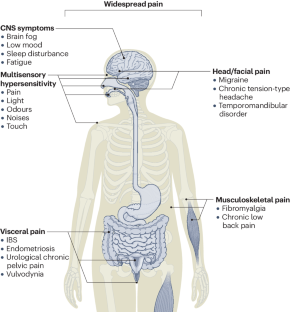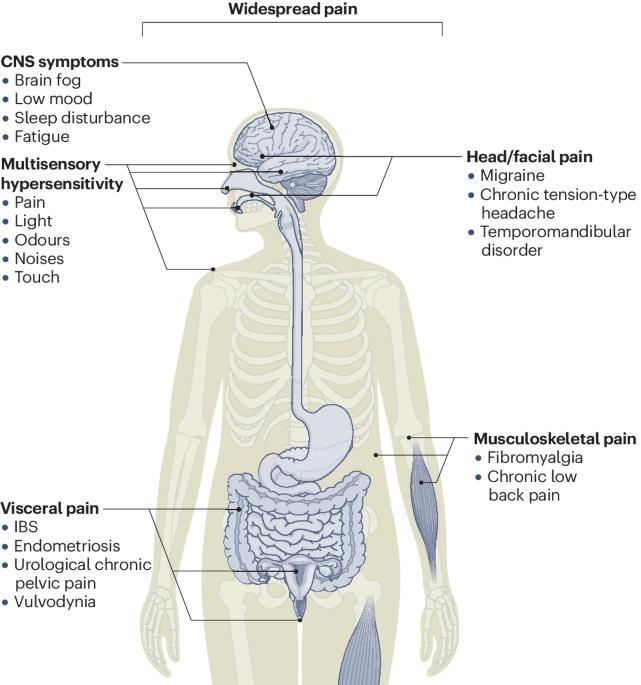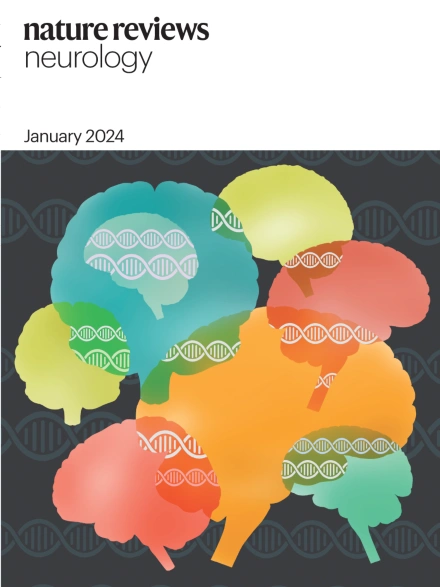Deciphering nociplastic pain: clinical features, risk factors and potential mechanisms
IF 28.2
1区 医学
Q1 CLINICAL NEUROLOGY
引用次数: 0
Abstract
Nociplastic pain is a mechanistic term used to describe pain that arises or is sustained by altered nociception, despite the absence of tissue damage. Although nociplastic pain has distinct pathophysiology from nociceptive and neuropathic pain, these pain mechanisms often coincide within individuals, which contributes to the intractability of chronic pain. Key symptoms of nociplastic pain include pain in multiple body regions, fatigue, sleep disturbances, cognitive dysfunction, depression and anxiety. Individuals with nociplastic pain are often diffusely tender — indicative of hyperalgesia and/or allodynia — and are often more sensitive than others to non-painful sensory stimuli such as lights, odours and noises. This Review summarizes the risk factors, clinical presentation and treatment of nociplastic pain, and describes how alterations in brain function and structure, immune processing and peripheral factors might contribute to the nociplastic pain phenotype. This article concludes with a discussion of two proposed subtypes of nociplastic pain that reflect distinct neurobiological features and treatment responsivity. Nociplastic pain arises from altered nociception despite the absence of tissue damage. In this Review, the authors summarize the risk factors and clinical presentation of nociplastic pain, and discuss its potential underlying mechanisms, including evidence of CNS, immune and peripheral contributions.


解密非结节性疼痛:临床特征、风险因素和潜在机制
非可塑性疼痛是一个机理术语,用于描述尽管没有组织损伤,但由于痛觉发生改变而产生或持续的疼痛。虽然非可塑性疼痛的病理生理学与痛觉性疼痛和神经病理性疼痛不同,但这些疼痛机制往往在个体内部重合,这导致了慢性疼痛的难治性。非神经痉挛性疼痛的主要症状包括身体多个部位疼痛、疲劳、睡眠障碍、认知功能障碍、抑郁和焦虑。患有非痉挛性疼痛的患者通常会出现弥漫性触痛--表明痛觉减退和/或异动症--并且通常比其他人对光、气味和噪音等非疼痛性感觉刺激更加敏感。本综述总结了非痉挛性疼痛的风险因素、临床表现和治疗方法,并描述了大脑功能和结构、免疫处理和外周因素的改变如何可能导致非痉挛性疼痛表型。本文最后讨论了所提出的两种非痉挛性疼痛亚型,它们反映了不同的神经生物学特征和治疗反应。
本文章由计算机程序翻译,如有差异,请以英文原文为准。
求助全文
约1分钟内获得全文
求助全文
来源期刊

Nature Reviews Neurology
医学-临床神经学
CiteScore
29.90
自引率
0.80%
发文量
138
审稿时长
6-12 weeks
期刊介绍:
Nature Reviews Neurology aims to be the premier source of reviews and commentaries for the scientific and clinical communities we serve. We want to provide an unparalleled service to authors, referees, and readers, and we work hard to maximize the usefulness and impact of each article. The journal publishes Research Highlights, Comments, News & Views, Reviews, Consensus Statements, and Perspectives relevant to researchers and clinicians working in the field of neurology. Our broad scope ensures that the work we publish reaches the widest possible audience. Our articles are authoritative, accessible, and enhanced with clearly understandable figures, tables, and other display items. This page gives more detail about the aims and scope of the journal.
 求助内容:
求助内容: 应助结果提醒方式:
应助结果提醒方式:


